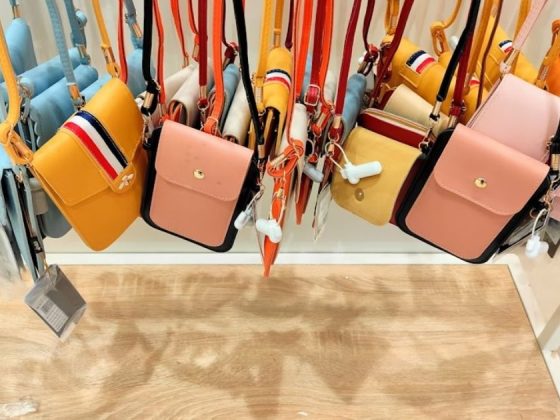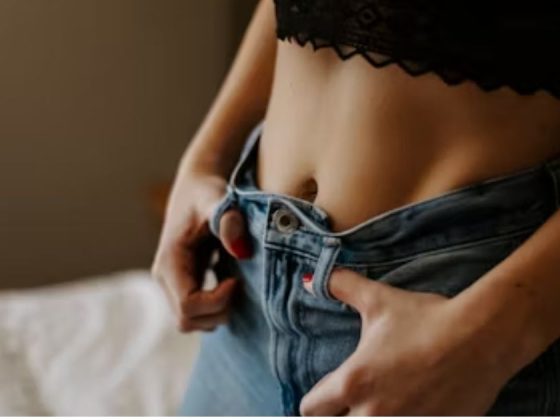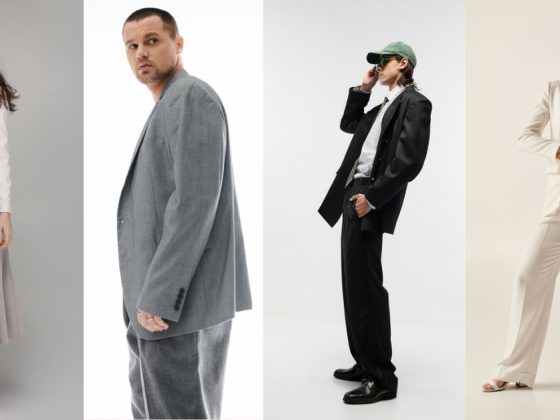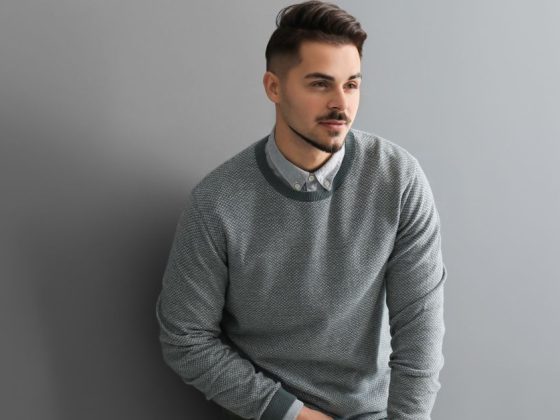Looking polished and put-together doesn’t require a luxury budget. Some of the most standout wardrobes are the result of savvy choices—prioritizing timeless staples, layering in bold accessories, and making the most of every purchase. With a little strategy (and a few insider tricks), fashion lovers can rock on-trend looks, build a versatile closet, and still keep their wallets intact. Because let’s be real—slaying should never mean overpaying.
Budget Fashion Tips to Look Chic Without Splurging
1. Shop Off-Season Like a Pro
In the world of fashion, the early bird doesn’t just get the worm—they get the deal. Shopping off-season is a smart way to score quality pieces at a major discount. Retailers clear inventory, making it easy to grab timeless staples for less. Think about it: coats go on major markdown once spring hits, swimwear sees serious discounts in the fall, and boots can be found for a steal in the middle of a summer heatwave. Retailers are constantly making room for new inventory, which means end-of-season clearances can slash prices by 50%, 60%, or even 70%.
The trick? Think ahead. Need a new winter jacket? Start browsing in March and planning next summer’s wardrobe? August and September are prime hunting grounds. This tactic not only saves money but also helps avoid the rush—and the regret—of last-minute full-price panic buying. With a little foresight and patience, a seasonal refresh becomes an affordable style win.
2. Embrace the Power of Thrift and Vintage
Once considered niche or nostalgic, thrifting has now gone full mainstream—and for good reason. Secondhand shopping blends budget-friendly fashion with one-of-a-kind character. It’s a go-to for standout pieces without the hefty price tag. Local thrift shops, curated vintage boutiques, flea markets, and digital platforms like Depop, Poshmark, ThredUp, and The Real offer everything from gently worn designer bags to retro blazers and one-of-a-kind denim.
What makes secondhand shopping so powerful is its unique aspect. Unlike fast fashion, vintage finds often have history, character, and craftsmanship that set them apart. And it’s not just about the aesthetic—it’s a win for the planet too. Buying secondhand reduces waste, reduces carbon footprints, and supports circular fashion. Whether hunting for ’90s windbreakers, timeless trench coats, or boho blouses, thrifting turns the fashion hunt into an affordable adventure—and every piece comes with a story.
3. Know Your Budget Brands
Chic style on a shoestring budget? Totally doable—if you know where to look. Affordable fashion doesn’t have to feel generic or cheap. Brands like Uniqlo offer minimalist staples that rival designer basics, while Zara and Mango serve up runway-inspired trends at prices that don’t sting. ASOS is a go-to for bold pieces, wide size ranges, and fashion-forward finds that keep up with the latest TikTok mood boards.
And don’t sleep on designer collabs—these limited-edition drops are pure gold for budget-conscious fashionistas. Examples like H&M x Mugler, Target’s Fall Designer collections, and Uniqlo x JW Anderson prove that high style doesn’t have to come with a high price. These collabs often bring high-end aesthetics to accessible price points, letting trendsetters flex serious style without the triple-digit guilt. The key is to move fast—these capsule collections tend to sell out quickly and become cult favorites for a reason.
4. Use Coupons, Cashback, and Price Trackers
In the digital age, paying full price is practically a fashion faux pas. Smart shoppers stack their savings with every click. Start by installing browser extensions like Honey, Rakuten, or Capital One Shopping—they automatically scour the web for promo codes and apply the best one at checkout. Some even offer cashback rewards, which means your cart can earn a little bonus back every time you shop.
Price tracking tools like Karma, Camel (for Amazon), or even built-in alerts from shopping apps let fashion lovers monitor markdowns like pros. Add a favorite pair of boots to your watchlist, and boom—an alert pops up when the price drops. It’s the ultimate “treat yourself” without the splurge. Combine a sale with a code and cashback, and suddenly that splurgy bag is a steal. Now that’s budget-savvy glam.
5. Master the High-Low Mix
Nothing says “style icon” like knowing how to blend designer polish with budget finds. Fashion editors and stylists swear by this approach—and for good reason. A $20 blazer from a fast-fashion rack can suddenly read couture when paired with a vintage Hermès scarf, designer shoes snagged on consignment, or a luxury handbag from a secondhand boutique. It’s all about contrast and balance: elevate a basic with a statement piece, or tone down a splurge with minimal essentials.
This mix also keeps personal style dynamic and unpredictable. Instead of wearing a head-to-toe label, the high-low formula makes an outfit feel curated—not copied. It shows intention, creativity, and savvy shopping skills that outshine even the most expensive ensembles. Bonus? It throws off those who try to guess how much everything costs—because half the magic is in the mystery.
6. Prioritize Versatility
Stretching a fashion budget relies more on adaptability than on the actual price tag. The most effective pieces are those that seamlessly transition between occasions and outfits. A black midi dress that shifts effortlessly from professional settings to relaxed weekends with a change of shoes or jewelry quickly becomes a wardrobe essential. Likewise, a tailored blazer that sharpens casual looks or layers over dresses, along with a versatile neutral bag that pairs well with various styles, helps build a collection that offers more mileage with fewer items.
Prioritizing adaptability allows for greater style with fewer items. Capsule wardrobe essentials—such as tailored jeans, button-down shirts, slip dresses, and ankle boots—offer countless styling possibilities, reducing the need for constant additions. When each garment can be styled in various ways, the overall cost-per-wear drops significantly. A cohesive wardrobe built on mix-and-match potential creates a refined, polished appearance—no luxury spending required.
7. Invest in Accessories That Work Overtime
Accessories are the style chameleons of any wardrobe—they can take an outfit from basic to editorial in seconds. And the best part? It doesn’t take luxury labels to make a bold impression. Think oversized hoops that frame the face with drama, a structured mini bag in a punchy hue, or a silk-look scarf that can be tied at the neck, around a bag handle, or even worn as a headband. These small additions carry big style weight.
Affordable retailers like & Other Stories, Etsy, and local thrift shops are treasure troves for accessories with personality. A sleek belt can cinch a shapeless dress into something runway-worthy, while a statement necklace can turn a plain tee into a deliberate look. The magic lies in choosing pieces with thoughtful details—texture, color, or shape—that feel elevated but aren’t budget busters. With the right accessories, even a $15 dress can read like a fashion week moment.
8. DIY Your Way to Custom Style
Style is shaped by imagination, not expense. DIY fashion offers a bold, personalized approach to standing out while minimizing cost and waste. Worn denim gains new life with frayed hems or bleach treatments, while plain jackets transform into artistic statements through patches or hand-painted touches. Even oversized tees evolve into fashion-forward crops with simple alterations, turning everyday pieces into something entirely distinct.
Formal training isn’t a prerequisite for customization. Online platforms such as YouTube, TikTok, and Pinterest provide a wealth of easy-to-follow tutorials ranging from no-sew tricks to creative embroidery techniques. Repurposing secondhand garments or restyling existing items promotes sustainability and individuality. Each reimagined piece carries a story, blending resourcefulness with self-expression in a way that feels both modern and meaningful.
9. Follow Fashion Insiders (Not Just Influencers)
Scrolling through influencer feeds is great for outfit inspo—but when it comes to staying ahead of the curve, fashion insiders are the real trend forecasters. Stylists, magazine editors, buyers, and even design interns often have their finger on the pulse months before a look hits mainstream shelves. Following them means getting the scoop on rising micro-trends, affordable dupes for runway looks, and indie brands that offer quality without the markup.
Whether it’s through TikTok style analysts, Reddit threads like r/femalefashionadvice, or newsletters from fashion-forward platforms like Who What Wear or The Zoe Report, these sources offer a more curated, behind-the-scenes look at the fashion cycle, plus, insiders often call out seasonal sales, must-have staples, and where to find budget-friendly alternatives to designer pieces—aka smart shopping gold.
10. Rent for the Big Moments
Special occasions don’t need to come with special-sized receipts. Renting fashion is a game-changer for those high-stakes moments like weddings, holiday parties, or gala nights where one-time outfits usually end up collecting dust. Instead of splurging on a gown that may never leave the closet again, platforms, like Rent the Runway, Nuuly, or Style Theory, offer access to designer dresses, statement bags, and on-trend pieces—without the long-term commitment.
Not only is renting a sustainable option, but it also unlocks luxury styles that might otherwise be out of budget. Want to rock a $500 dress for under $80? Easy. Plus, you’ll get those jaw-dropping photos without the post-event regret. It’s fashion freedom—wear it, love it, return it: no dry cleaning stress, no closet overflow, and no guilt about chasing that show-stopping moment.
How to Dress Well Without Overspending
Effortless style doesn’t depend on a large budget—it stems from thoughtful decisions and creative styling. Securing key wardrobe pieces during off-season sales, uncovering standout items at secondhand shops, or selecting well-crafted options from affordable labels turns fashion into a savvy pursuit. Prioritizing timeless staples and focusing on versatility ensures a wardrobe that feels fresh, functional, and polished across seasons.
Budget-conscious dressing emphasizes intentional styling over excess. Pairing foundational basics with statement accessories or vintage designer accents results in looks that feel distinct and elevated. With a strategic approach, fashion maintains impact without financial strain—leaving room for essential expenses or occasional splurges. Ultimately, style isn’t determined by cost, but by cohesion, confidence, and the ability to wear each piece with purpose.














